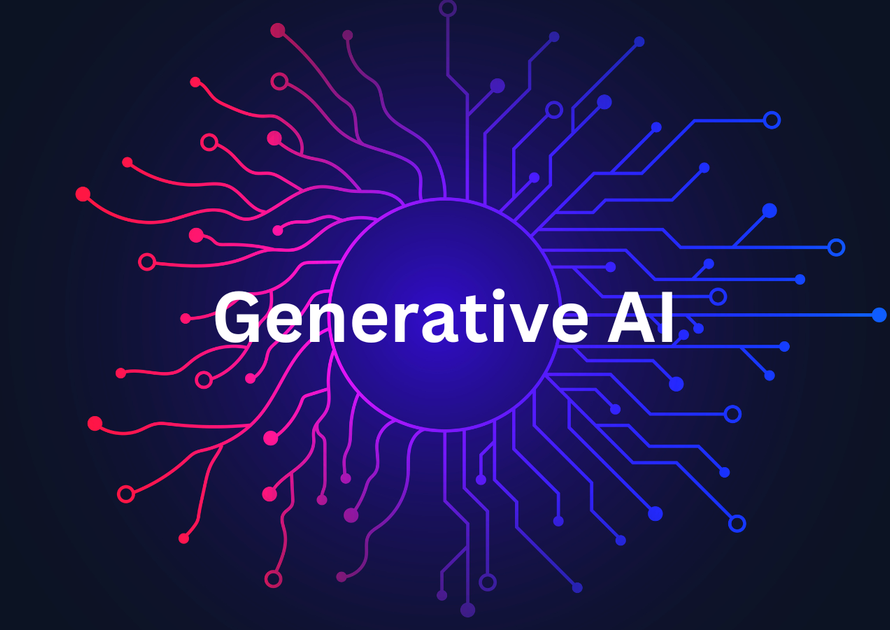Do you remember when ChatGPT by OpenAI debuted in November 2022? Within days, it stunned the world with its unprecedented capabilities, marking the dawn of the generative AI revolution. Everyone wondered, what comes next?
At the time, ChatGPT and other Generative AI tools powered by Large Language Models (LLMs) could accept text inputs and generate corresponding text outputs. These tools were simply known as unimodal AI tools.
But that was just the beginning—a mere glimpse of what LLMs could achieve. Since then, industry advancements have been so profound that the potential long-term implications of ChatGPT and generative AI seem limitless.
Today, if someone were to ask what lies ahead, the answer would likely involve multimodal learning. This trend is among the most promising in the ongoing AI revolution. Multimodal generative AI models can handle diverse types of inputs and produce various types of outputs.
In this blog post, we will explore multimodal AI: its definition, multimodal LLMs, underlying technologies, examples, and real-world applications. Are you ready to delve into multimodal AI? Let's get started!
Jump to Section
ToggleWhat exactly is Multi Modal AI?
Initially, artificial intelligence (AI) algorithms capable of generating text, like ChatGPT, operated in a unimodal fashion. This means they were restricted to processing only one type of input and consistently produced outputs in the same format. Typically, these models were optimized to process textual prompts and generate corresponding text responses.
This emphasis on text is practical because text data is abundant and relatively easy to manage. Numerous sources on the internet provide ample training data for tools such as ChatGPT.
Multimodal learning within AI expands the capabilities of machines by training them not just on vast amounts of text, but also on other forms of sensory information like images, videos, or audio files. This approach allows models to discover new patterns and correlations between textual descriptions and associated visual or auditory content.
Multimodal generative AI represents a significant advancement in intelligent systems. For example, in training, multimodal AI models integrate diverse data types, enabling them to accept inputs from multiple modalities and generate outputs in various formats. For instance, the foundational version of ChatGPT – GPT-4 – can process both image and text inputs to generate textual responses. OpenAI's latest model – GPT-4o – can reason across audio, vision, and text in real time, showcasing the evolving capabilities of multimodal AI technologies.
What sets Multimodal AI apart from Multimodal LLMs?
Multi-modal LLMs, or large language models, have recently gained immense significance in revolutionizing our interactions with computers and the internet. With billions of parameters, these models can comprehend and generate text in a manner that closely resembles human language, making them invaluable for a wide range of applications.
Simultaneously, Multi-modal AI has seen rapid advancement, blending various AI modalities such as text, image, audio, and video to create more holistic and human-like AI systems. These systems can process and generate content across multiple modalities, facilitating applications like speech recognition and automated image captioning.
Large Language Models have been transformative in artificial intelligence by enabling human-like text generation and understanding. They are equally pivotal in multi-modal AI as they bridge the gap between textual content and other modalities such as images or videos, resulting in more adaptable and comprehensive AI systems.
The field of artificial intelligence has made significant strides recently, largely propelled by Large Language Models (LLMs) such as GPT-4 and Llama-3, which have garnered substantial attention and have been instrumental in diverse natural language processing (NLP) tasks. However, the integration of these LLMs with other modalities like images or videos has opened up new possibilities.
Applications of Multi Modal AI
Multimodal AI, with its ability to integrate and process multiple types of data such as text, images, audio, and video, holds immense potential across a variety of applications. Here are some key areas where multimodal AI is making a significant impact:
- 1. Natural Language Understanding and Generation: Multimodal AI enhances natural language processing (NLP) capabilities by incorporating contextual information from images, videos, or audio alongside textual data. This allows for more nuanced understanding of language and context, leading to improved chatbots, virtual assistants, and automated translation systems.
- 2. Vision and Language Tasks: One of the prominent applications of multimodal AI is in tasks that require both visual and textual understanding. For instance, image captioning, where AI generates descriptive captions for images, or visual question answering (VQA), where AI answers questions about images using both visual and textual inputs.
- 3. Healthcare: In healthcare, multimodal AI can analyze medical images (like X-rays or MRIs) along with textual patient records to assist in diagnostics. It can also be used for monitoring patient conditions through audio inputs (such as voice analysis for detecting health issues) combined with other medical data.
- 4. Media and Entertainment: Multimodal AI is transforming media industries by enabling automated content creation and personalization. It can generate subtitles or captions for videos, recommend content based on both textual preferences and viewing habits, and even create entirely new multimedia content like videos from text descriptions.
- 5. Education: In education, multimodal AI enhances learning experiences by providing personalized tutoring based on both textual interactions (like answering questions) and visual interactions (like analyzing diagrams or videos). It can also assist in creating adaptive learning environments tailored to individual student needs.
- 6. Autonomous Systems: Autonomous vehicles and robotics benefit from multimodal AI by integrating visual perception (using cameras), auditory perception (using microphones for detecting sounds), and textual commands (from human interactions) to make informed decisions and navigate their environments safely.
- 7. Security and Surveillance: Multimodal AI improves security systems by combining visual data (from cameras), audio data (from microphones for detecting unusual sounds), and textual data (from alerts or reports) to enhance threat detection and response capabilities.
- 8. Finance and Business: In finance, multimodal AI can analyze textual news articles, financial reports, and market trends alongside visual data from stock charts or graphs to make informed investment decisions. It can also automate customer service interactions through voice and text-based systems.
In essence, multimodal AI extends the capabilities of traditional AI systems by enabling them to process and understand diverse types of data simultaneously, leading to more sophisticated, context-aware applications across various domains.
What technologies does Multimodal AI leverage?
Multimodal AI harnesses a spectrum of cutting-edge technologies to enable its diverse capabilities across various applications. Here’s an exploration of the key technologies that drive Multimodal AI:
- 1. Natural Language Processing (NLP): Central to Multimodal AI is its ability to process and understand textual data. Advanced NLP techniques, often supported by large language models (LLMs) like GPT (Generative Pre-trained Transformer), enable AI systems to interpret, generate, and respond to text inputs effectively.
- 2. Computer Vision: Multimodal AI integrates computer vision technologies to analyze and interpret visual information from images and videos. Convolutional Neural Networks (CNNs), for instance, are pivotal in tasks such as object detection, image classification, and facial recognition, enabling AI systems to understand and generate content based on visual inputs.
- 3. Speech Recognition and Synthesis: Audio data plays a crucial role in Multimodal AI applications. Speech recognition technologies, powered by deep learning algorithms such as Recurrent Neural Networks (RNNs) and Transformer models, allow AI systems to transcribe spoken language into text. Conversely, speech synthesis technologies generate human-like speech from text inputs, enhancing interactions in virtual assistants and other applications.
- 4. Multimodal Fusion: At the heart of Multimodal AI is the fusion of information from different modalities—text, images, audio, and video—to derive deeper insights and make more informed decisions. Techniques such as attention mechanisms and multimodal transformers facilitate the integration and synchronization of these diverse data sources, enabling AI systems to understand and generate content across multiple dimensions simultaneously.
What Does the Future Hold for Multi Modal AI?
The evolution of generative AI is poised to enter its next transformative phase, aptly termed as 'multimodal generative AI'. The rapid ascent of multimodal learning has led to the development of innovative models and applications across various domains. We are currently witnessing the early stages of this revolution. As new techniques and technologies combine different modalities, the scope of multimodal AI is set to expand significantly in the years ahead.
However, along with this newfound capability comes significant responsibility. Multimodal AI introduces serious risks and challenges that must be carefully managed to ensure an inclusive and sustainable future.
Explore ai-horizon.io to delve into the world of Generative AI. Contact us for Demos related to applications of Multi Modal AI.



